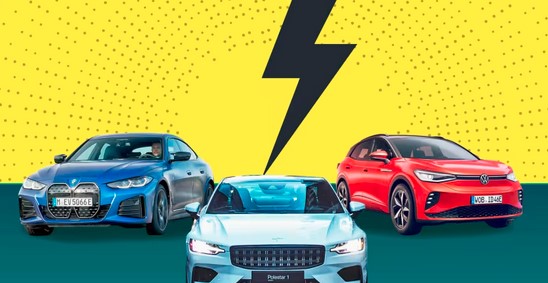In the pursuit of a greener and more sustainable future, the automotive industry is undergoing a profound transformation with the rise of electric vehicles (EVs). In this article, we will explore the electric vehicle revolution, its environmental impact, technological advancements, and the changing landscape of transportation.

The Environmental Imperative:
Reducing Emissions: Electric vehicles produce zero tailpipe emissions, contributing to cleaner air and mitigating the impact of climate change. This is especially crucial in urban areas with air quality issues.
Lower Carbon Footprint:
EVs have a significantly lower overall carbon footprint compared to traditional internal combustion engine vehicles. This reduction in greenhouse gas emissions results from a cleaner electricity generation mix and greater energy efficiency.
Energy Efficiency:
Electric motors are inherently more energy-efficient than internal combustion engines, converting a higher percentage of energy from the grid into vehicle movement.
Technological Advancements
Battery Technology:
Advances in battery chemistry and manufacturing have led to longer driving ranges, faster charging times, and increased durability. Lithium-ion batteries dominate the market, but solid-state batteries hold promise for the future.
Charging Infrastructure:
The expansion of charging networks worldwide has alleviated “range anxiety,” making EVs more accessible and convenient for drivers.
Connected Features:
Electric vehicles often come equipped with advanced connectivity features, including smartphone apps for monitoring and controlling the vehicle, over-the-air updates, and integration with smart home systems.
The Shifting Landscape of Transportation
Diverse Vehicle Types:
Beyond passenger cars, electric mobility extends to various vehicle types, including electric trucks, buses, bicycles, and scooters, transforming the entire transportation ecosystem.
Autonomous Driving:
The convergence of electric powertrains and autonomous technology promises safer, more efficient transportation systems. Companies are investing in self-driving electric vehicles for ride-sharing and delivery services.
Sustainable Urban Planning:
Many cities are reevaluating their transportation infrastructure, prioritizing public transportation, cycling lanes, and pedestrian-friendly urban design, with EVs playing a central role in these sustainable initiatives.
Consumer Adoption and Incentives
Lower Operating Costs:
Electric vehicles generally have lower operating costs compared to traditional vehicles due to cheaper electricity, fewer moving parts, and reduced maintenance needs.
Government Incentives:
Many governments offer incentives such as tax credits, rebates, and HOV lane access to encourage electric vehicle adoption.
Consumer Education:
Increasing awareness of the environmental benefits and long-term cost savings associated with EVs is driving consumer interest.
Challenges and Future Prospects
Charging Infrastructure Expansion: Further developing charging networks, especially in rural and underserved areas, is critical for widespread EV adoption.
Battery Recycling:
Developing sustainable practices for recycling and disposing of lithium-ion batteries is essential to minimize environmental impact.
Range and Charging Speed:
Advancements in battery technology are needed to improve range and charging times, making EVs more competitive with traditional vehicles.
Conclusion
The electric vehicle revolution is reshaping the automotive industry, offering a cleaner, more sustainable mode of transportation. With ongoing technological advancements, a growing charging infrastructure, and increasing consumer awareness, electric vehicles are poised to play a pivotal role in reducing carbon emissions and creating a greener future on wheels. As the automotive landscape continues to evolve, embracing electric mobility represents a promising step toward a more sustainable and environmentally conscious transportation ecosystem.



